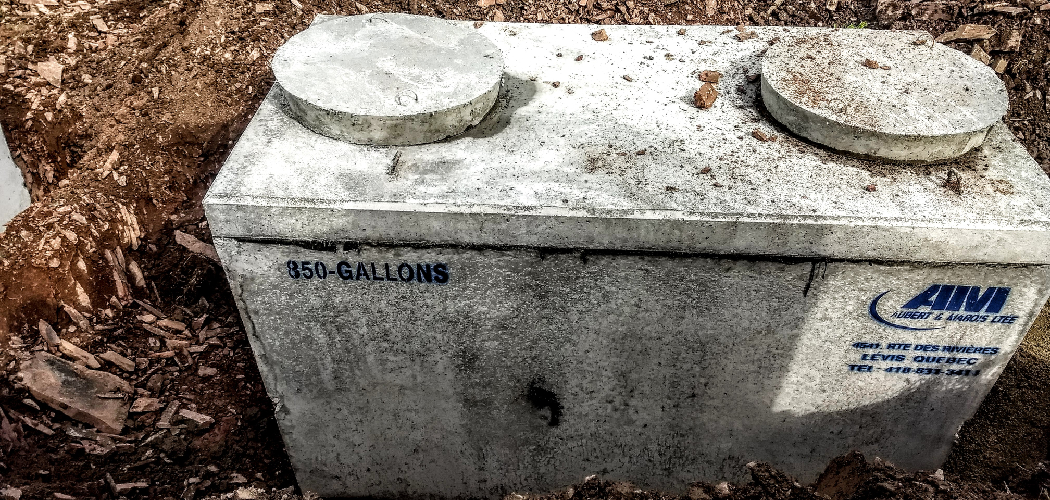When it comes to property development or construction, one of the critical things to consider is the distance between the septic tank and the structure. If you plan to build near an existing septic tank or install a new one, you might wonder, “How close can you build to a septic tank?”
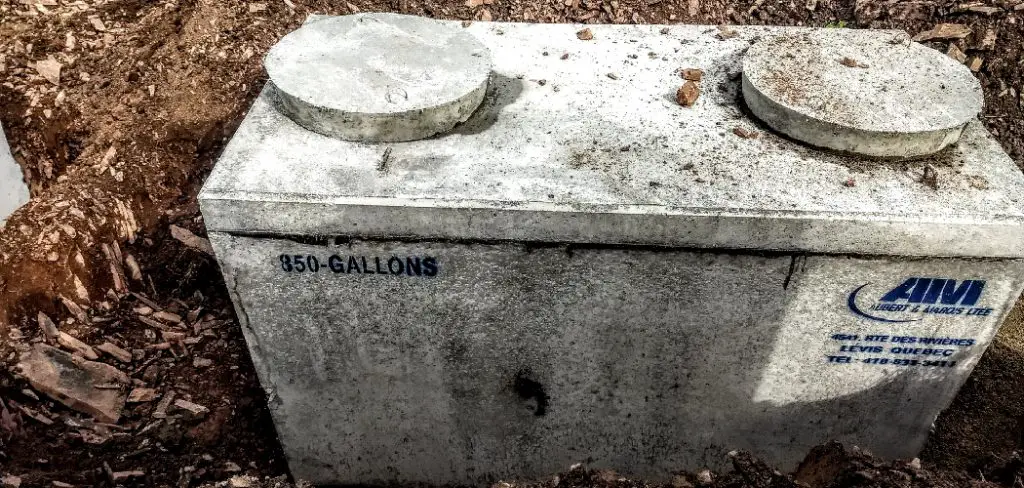
The answer to this question is not straightforward and depends on several factors. This blog post will discuss the risks of building too close to a septic tank and explore how to determine the appropriate distance.
What are the Risks of Building Too Close to a Septic Tank?
Building too close to a septic tank can have several adverse effects. One of the most significant risks is contamination of the structure’s foundation with wastewater and other harmful bacteria.
This can weaken the structure’s structural integrity, cause it to collapse, or even become uninhabitable. Moreover, building too close to a septic tank can cause system functionality issues. The weight of the construction can damage the pipes or break the septic tank itself, leading to costly repairs.
How to Determine the Appropriate Distance?
The appropriate distance from the septic tank depends on several things, including the size of the system, property size, and local regulations. For instance, the minimum distance required between the tank and a building is 5 feet in most regions. However, this distance can vary depending on the size of the tank, state regulations, and local codes. In some areas, it can even be 50 feet or more.
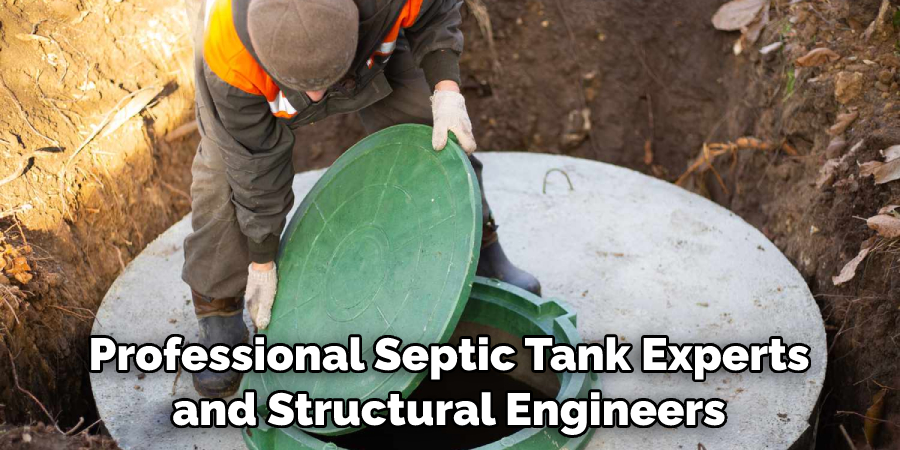
Professional septic tank experts and structural engineers can help determine the appropriate distance for your particular situation. They will assess the design of your home and the location of the septic tank system to advise you on the appropriate distance.
What Are the Regulations on Building Near a Septic Tank?
The government and local authorities have different regulations concerning septic tank installations, maintenance, and inspections. Building codes in different regions require homeowners to follow specific rules and regulations before starting construction near a septic tank.
In some areas, these regulations specify the m minimum setback distance required between a home and a septic system. It is vital to know these regulations before beginning any construction near an existing septic system.
How Close Can You Build To A Septic Tank: 5 Things to Consider
1. The Size of The Septic Tank
One of the most important considerations when building a septic tank is the size of the tank. The size of the tank will determine how much waste can be stored in the tank and how often it will need to be emptied. A larger tank will require less frequent emptying but will also be more expensive to build.
2. The Location of The Septic Tank
Another important consideration when building a septic tank is the location of the tank. The tank must be located in an area that is large enough to accommodate it and has good drainage. Additionally, the tank should be located at least 10 feet away from any buildings or other structures.
3. The Type of Soil
The type of soil in the area where the septic tank will be located is also an important consideration. Soil that is too sandy or too clay-like can cause problems with the proper functioning of the septic system. The ideal type of soil for a septic system is loamy soil, which has a balance of sand, clay, and organic matter.
4. The Climate
The climate in the area where the septic system will be located is also an important consideration. Septic systems are designed to function best in areas with moderate temperatures and rainfall.
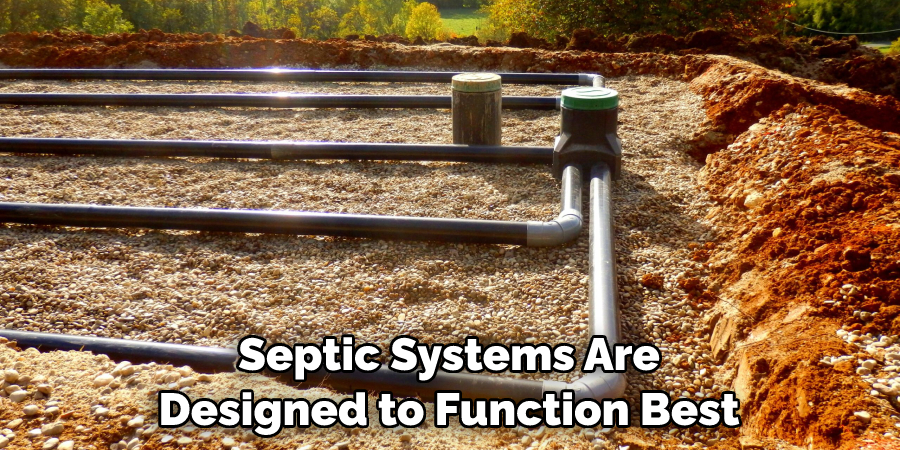
If the climate is too cold or too hot, it can cause problems with the system’s proper functioning. Additionally, if the area experiences heavy rains, it can saturate the ground and cause flooding, damaging or even destroying a septic system.
5. The Cost
Of course, cost is one of the most important considerations when building a septic system. Septic systems can range in cost from a few thousand dollars to tens of thousands of dollars, depending on their size and complexity.
It is important to get estimates from several different contractors before making a final decision to ensure that you are getting the best possible price for your septic system.
How to Build a Septic Tank Near the Building – in 7 Easy Steps
Step 1. Locate the Septic Tank Field.
To build a septic tank near your building, you need to begin by locating the septic tank field. This is where all the components of the system will be located and should be around 3-4 feet below ground level. You can use a shovel or backhoe to dig it out.

Step 2. Excavate the Septic Tank Field.
Once you have located the septic tank field, it is time to begin excavating the area. You will need to dig a deep and wide hole for the septic tank and all its components. When digging, ensure you are mindful of underground utilities, such as power lines and water mains.
Step 3. Install the Septic Tank.
Now that you have excavated the area, it is time to install the septic tank. This can be done with a basic shovel and heavy-duty equipment for transporting and placing the tank. Make sure to follow all local codes and regulations when installing your tank.
Step 4. Connect the Inlet and Outlet Pipes to The Septic Tank.
To complete the septic tank installation, you need to connect all inlet and outlet pipes. This is done by running piping from the house that enters and exits out of the tank. Make sure all connections are secure before continuing.
Step 5. Backfill Around the Septic Tank.
Once all the pipes are hooked up, it is time to start backfilling around the septic tank. Make sure to use a material that will not compact too much and can act as a cushion for the tank. This should be done in layers, each tamped down before continuing.
Step 6. Cover the Septic Tank with A Layer of Soil.
Once you have finished backfilling, it is time to cover the tank with a layer of soil. This should be done carefully and use a material that will not compact too much, allowing for proper ventilation. Make sure this layer is at least 12 inches thick.
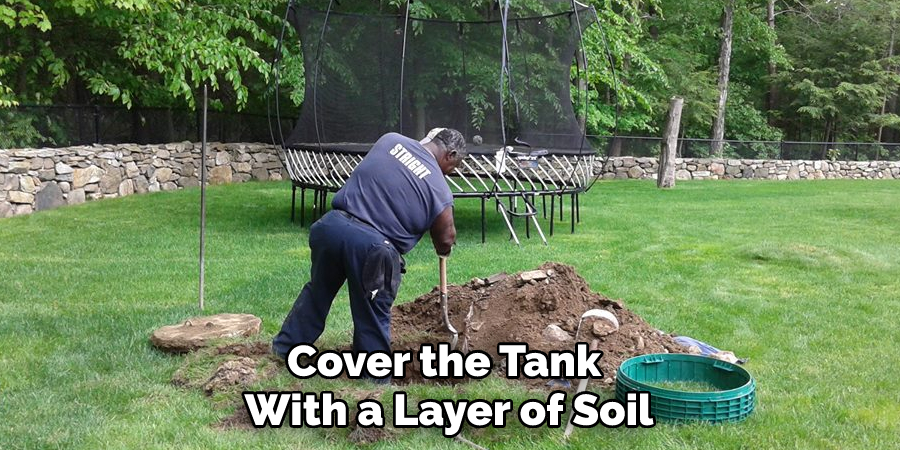
Step 7. Monitor the System Regularly.
Once your septic tank and piping have been installed, it is important to monitor the system regularly. This will ensure everything is working properly and that there are no leaks or other issues with the system. Make sure you call a professional if you notice any problems.
Following these seven steps, you can easily build a septic tank near your building without breaking local codes or regulations. With these tips, you can ensure your system is functioning properly and stays safe for years to come. So don’t wait – get started on your project today!
5 Benefits of Building a Septic Tank Close a Building
1. Reduced Soil Erosion
One of the primary benefits of building a septic tank close to a building is that it can help to reduce soil erosion. Soil erosion is a major problem in many areas, as it can lead to the loss of valuable topsoil.
By building a septic tank close to a building, the amount of soil that is disturbed during construction can be minimized. The septic tank will also act as a barrier to prevent runoff from rainfall or irrigation from causing further soil erosion.
2. Improved Water Quality
Another benefit of building a septic tank close to a building is that it can improve water quality. Septic tanks are designed to treat wastewater before it is discharged into the environment. Treating wastewater before it is released greatly reduces the risk of water pollution. Additionally, treated wastewater can be used for irrigation or other purposes, which can help to conserve water resources.
3. Reduced Stormwater Runoff
Building a septic tank close to a building can also help to reduce stormwater runoff. Stormwater runoff is water from rainfall or snowmelt that flows over the land surface and eventually into waterways.
Stormwater runoff can carry pollutants such as sediment, nutrients, and chemicals, degrading water quality and harming aquatic ecosystems. By capturing stormwater in a septic tank, the amount of pollution that enters waterways can be reduced.
4. Reduced Flooding
Another benefit of building a septic tank close to a building is that it can help to reduce flooding. Flooding occurs when there is too much water for an area’s drainage system to handle.
When this happens, water will flow overland and cause damage to property and infrastructure. Storing water in a septic tank during periods of heavy rainfall can reduce the risk of flooding.
5. Increased Property Value
Finally, building a septic tank close to a building can also increase property value. Septic tanks are often seen as an amenity, as they provide an environmentally friendly way to treat wastewater. As such, properties with septic tanks are often valued higher than those without them.
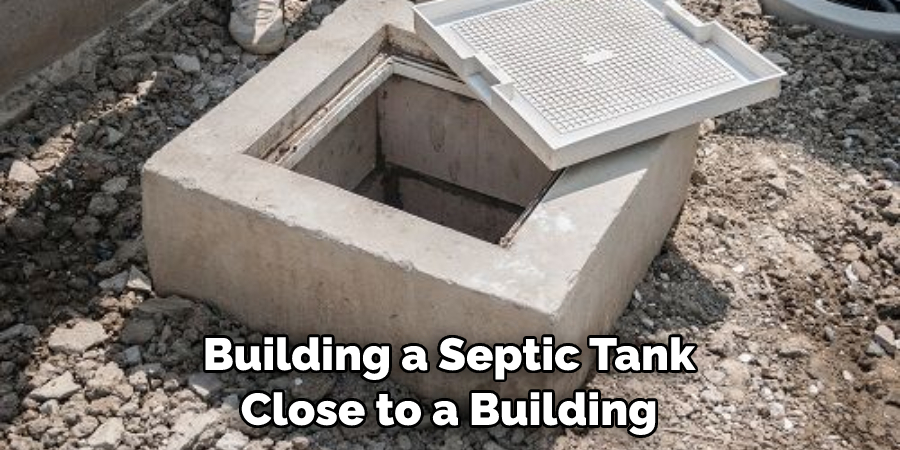
Additionally, having a septic tank close to a building can make installing other necessary infrastructure easier and more cost-effective, such as plumbing or electrical systems. This can also add value to the property.
Conclusion
In conclusion, knowing how close can you build to a septic tank is an essential factor that homeowners must consider before initiating any construction. While the minimum setback distance from a septic tank to a building is five feet, it can vary depending on the size of the tank, state regulations, and the property’s size. Working with septic tank experts and structural engineers is critical to determine the appropriate distance.
Moreover, knowing and adhering to local regulations before starting any construction near a septic tank is essential. This way, you can avoid any potential issues impacting your property’s structural integrity and safety.

